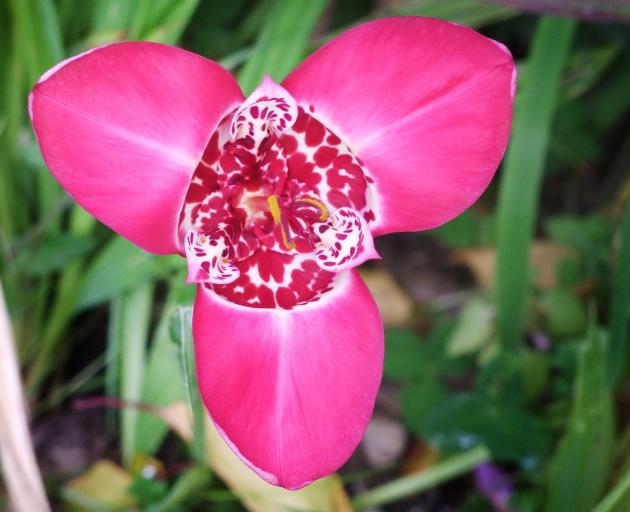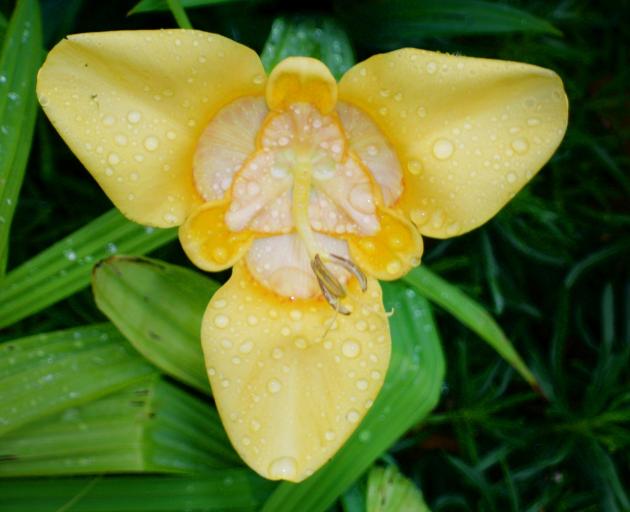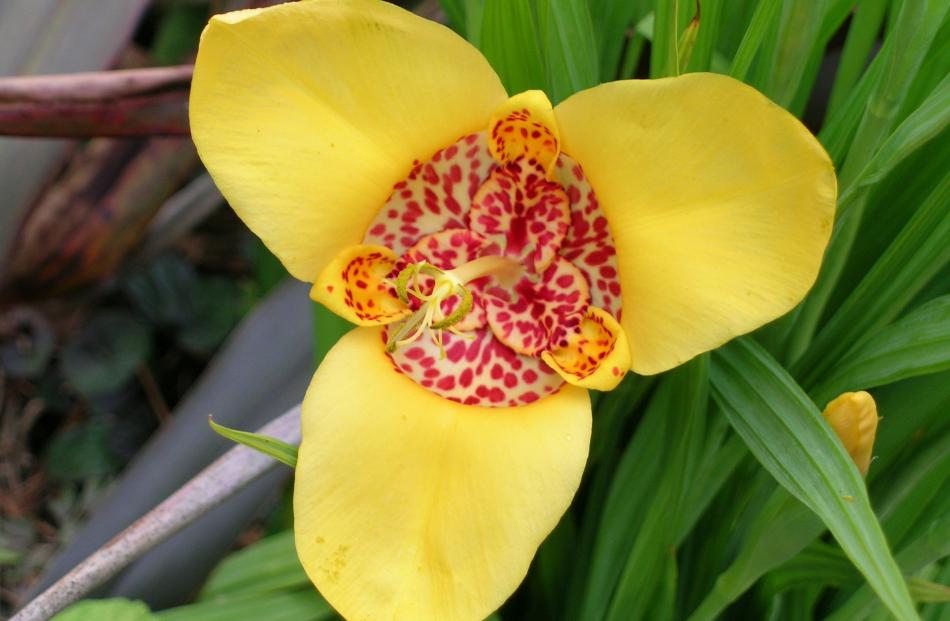My grandmother never went to the races but her garden had lots of jockey caps. Like racehorses, each arrived for a day then was gone until the next outing.
Hers were Tigridia pavonia, a Central American native commonly known as jockey cap or day lily. In fact, they are not related to true lilies but are members of the iris clan (Iridaceae).
Said to have been cultivated 1000 years ago by Mexico’s Aztecs, who ate the bulbs, T. pavonia is the best known of the 30 or so species in the genus. Each bloom lasts for just one day but makes up for that by having several buds on each 30cm stem, opening in succession to reveal three-petalled "hats", usually with light centres spotted with dots the same colour as the petals. The Aztecs called them jaguar flowers because of the markings, and "Tigridia" means tiger-like.

Jockey caps seem to be a bit out of favour, possibly because they don’t tolerate very warm winters or high humidity, which knocks them out of the running in northern regions. However, one company sells them online at about $1.50 a bulb and Egmont Seeds has packets of 15 New Zealand-raised seeds in mixed colours for $4.50. If white is your thing, the only source I found wanted $10 for a single bulb.
Bulbs are planted in spring or existing clumps divided in autumn. Seed can be sown in spring or autumn and if you gather it when the seed pods turn golden brown, sowing at once in a deep seed tray almost guarantees mega germination. Seedlings can take two years to flower and if the seed came from a patch with more than one colour, you may get an exciting mix of hues in the next generation.

The soil for jockey caps should be loose and well-drained, with a little blood and bone or general fertiliser added to give the bulbs a boost. Little spears of attractive pleated leaves pop up in spring, with flowers appearing from about mid-January.
The flowering season is short but for a sunny spot jockey caps are as much fun as a day at the races.













